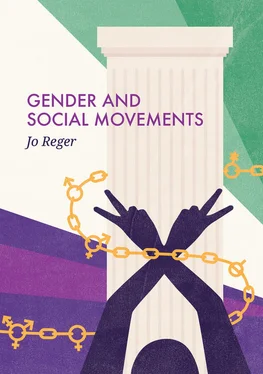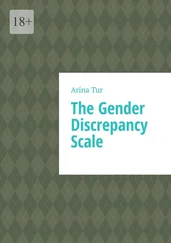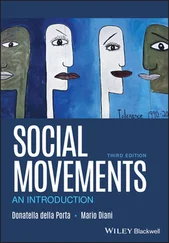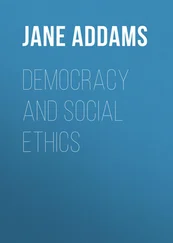Emerging in 2017, the importance of #MeToo was captured later that year when Time Magazin e named the Person of the Year – “The Silence Breakers” – acknowledging the number of women who had come forward claiming they too were victims of harassment and sexual assault by powerful, cisgendered men. The beginnings of hashtag movement can be traced back to the multitude of women who accused media mogul Harvey Weinstein of sexual harassment, assault, and rape (Johnson and Hawbaker 2019; NPR 2018). Quickly following these accusations against Weinstein, the names of prominent men (and a few women) accused of behaviors ranging from sexual harassment to rape began to snowball. The list included powerful men in politics (U.S. Senator Al Franken, U.S. Senate nominee Roy Moore), entertainment (comedians Bill Cosby and Louis C. K., actor Kevin Spacey, R&B artist R. Kelly), and business (Uber CEO Travis Kalanak). Charges of sexual assault, harassment, and rape against President Donald Trump, along with his infamous statement about grabbing women by the “pussy,” also added to the moment.
#MeToo was not confined to the United States. It quickly spread with charges against prominent men across the globe in countries including South Korea, Sweden, and Egypt, all experiencing “landmark” victories for the accusers (Stone and Vogelstein 2019). Initially the hashtag was attributed to white actor Alyssa Milano; however it was later credited to long-time sexual assault activist Tarana Burke, who coined the term “Me Too” in 2006. Reflecting on #MeToo, it is clear that this wave of accusations challenged beliefs about gendered interpersonal relations, forced a redefinition of sexual consent, and illustrated how power cannot always win the silence of victims.
For as much as #MeToo tells us about the society we live in, it is also a productive place to begin an examination of gender and social movements. First, it allows us to see how social change occurs and how social movements play a role in those changes. Second, it highlights how issues of gender can be at the core of social change efforts. Third, taking a historical view of #MeToo illustrates that what appears to be a contemporary issue has its roots in the past. Finally, the mis-crediting of the hashtag to a white actor instead of the Black woman activist who created it demonstrates the importance of looking at gender issues through the lens of race and other social identities. Using the #MeToo movement as a starting place, this book explores the intersections and interactions of gender and social movements. To untangle these dynamics, I examine how gender influences social change by exploring how it shapes participants, social change goals, and the means (i.e. tactics and strategies) by which change is sought. In other words, the who, how, and why of social change is shaped by gender, even when it is not obvious to observers and participants. To understand these dynamics, I start by defining the ways in which we understand gender.
How Gender “Sorts” Society
While the common usage of “gender” often refers to whether someone identifies as male or female (e.g. sex), theorists argue that gender is more than sex and is, in fact, embedded in society in a multitude of ways beyond the individual. Judith Lorber (1994) defines gender as a process, a system of stratification, and as a structure shaping social life. To understand the difference between gender and sex, Lorber explains that we typically are assigned a sex at birth (male or female), and due to the assignment are placed in a sex category (woman or man, boy or girl). That sex category then takes on the attributes of gender dictated by our culture, prescribing our behaviors and lifelong expectations related to our gender. Gender is a core identity for individuals, set up on the binary of woman/man or masculine/feminine. People whose gender identity and sex category are in alignment are called cisgender. People also have identities outside the binary. Identities such as gender non-binary, gender non-conforming or gender fluid are present in society with more diverse identities being articulated. However, since gender is also a structure in society (Lorber 1994), it is used to sort people into the categories, making it difficult to completely break out of the binary in all aspects of life. For example, it is a relatively recent development that some places will allow identification outside the binary on official documents such as IDs, driver licenses, and birth certificates. Gender also resides outside of the individual and is commonly assigned to traits or behaviors such as acting masculine (i.e. active, rational, instrumental) or feminine (i.e. passive, emotional, nurturing). Embedded in this binary way of seeing identities and behaviors are value judgments (e.g. it is better to be active rather than passive) as well as indications of societal power (e.g. instrumental/action-oriented actions are rewarded more than emotional/nurturing ones). This illustrates how gender is both a system of stratification, that is distinguishing, valuing, rewarding individuals who show the most prized behaviors, and a structure with gendered ideas built into the very organization of society such as the home or workplace. Overall, gender is used to sort where people “belong” and what they should “do” in a society.
As such, gendered identities shape the way an individual experiences social life. Candace West and Don Zimmerman (1987) coined the phrase “doing gender” to explore how we integrate gender into everything we do. Seen as a type of performance, gender is not only a set of behaviors (e.g. acting masculine, feminine or fluid), but is also a set of social expectations for which we are held accountable. People who step out of their “side” of the gender binary – men who act feminine, women who act masculine – can be sanctioned by others in society (Lorber 1994; West and Zimmerman 1987). As West and Zimmerman put it, we can be “held hostage” to gender’s production in everyday life (1987: 126). It is important to note that with the hierarchy of gender characteristics, women can often “get away with” acting more masculine than men who do “too much” femininity. The unevenness of sanctions against these forms of “deviance” tells us that gender is, in fact, a system of inequality, operating on multiple levels of privilege and oppression (Connell 1987).
Despite having our gender evaluated in everyday life, scholars note that there are places that allow more agency and control over our “doing” of gender. For instance, Mimi Schippers (2002) argues that in the alternative hard rock community, participants engage in “gender maneuvering” that reworks some of the hierarchy embedded in their interactions and contributes to an alternative gender order, while not completely eradicating it. Tony Silva (2016) found that a group of rural men who identified as heterosexual also engaged in sexual practices with other white, masculine, heterosexual, or secretly bisexual men. Silva labels this “bud sex” and notes that men continued to define themselves as masculine and heterosexual, despite having same-sex sexual encounters. In other words, they controlled the gender discourse around their behavior. Overall, despite being held accountable for doing “appropriate” gender, people can find ways to resist and change how they “do gender,” to some degree.
In addition to “doing” and learning our gender, we also “determine” the gender of others. Laurel Westbrook and Kristen Schilt (2013) note that in social interactions, we draw on visual and behavioral cues to determine an individual’s gender category. However, Westbrook and Schilt problematize this process by noting how transgender individuals in public settings can confuse this process and cause “gender panics.” These panics are particularly apparent in spaces that are gender segregated such as public restrooms. Westbrook and Schilt remind us that even when binary-focused ideas of gender identity are changing, core beliefs in a dichotomy of sex, gender, and sexuality are still maintained. Gender then is not only something we do throughout our days, but it also something that is determined about us, based on the cues we provide through dress, behavior, and social context.
Читать дальше












